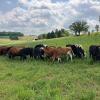We owe our beautiful autumn apple harvest to invertebrates—pollinators and beneficial insects alike.
A mention of October conjures images of changing leaves, cozy nights, and harvest—and of course, one of the most prevalent symbols of harvest in the northern hemisphere is the apple. Varieties ranging from Fuji to honeycrisp to gala lend their distinct tastes to seasonal treats like pies, cobblers, and caramel apples. Enjoying this fundamental fall fruit would not be possible without the assistance of pollinators and other beneficial insects, and today, midway through National Apple Month, we will take a moment to express gratitude for these often-overlooked invertebrates.
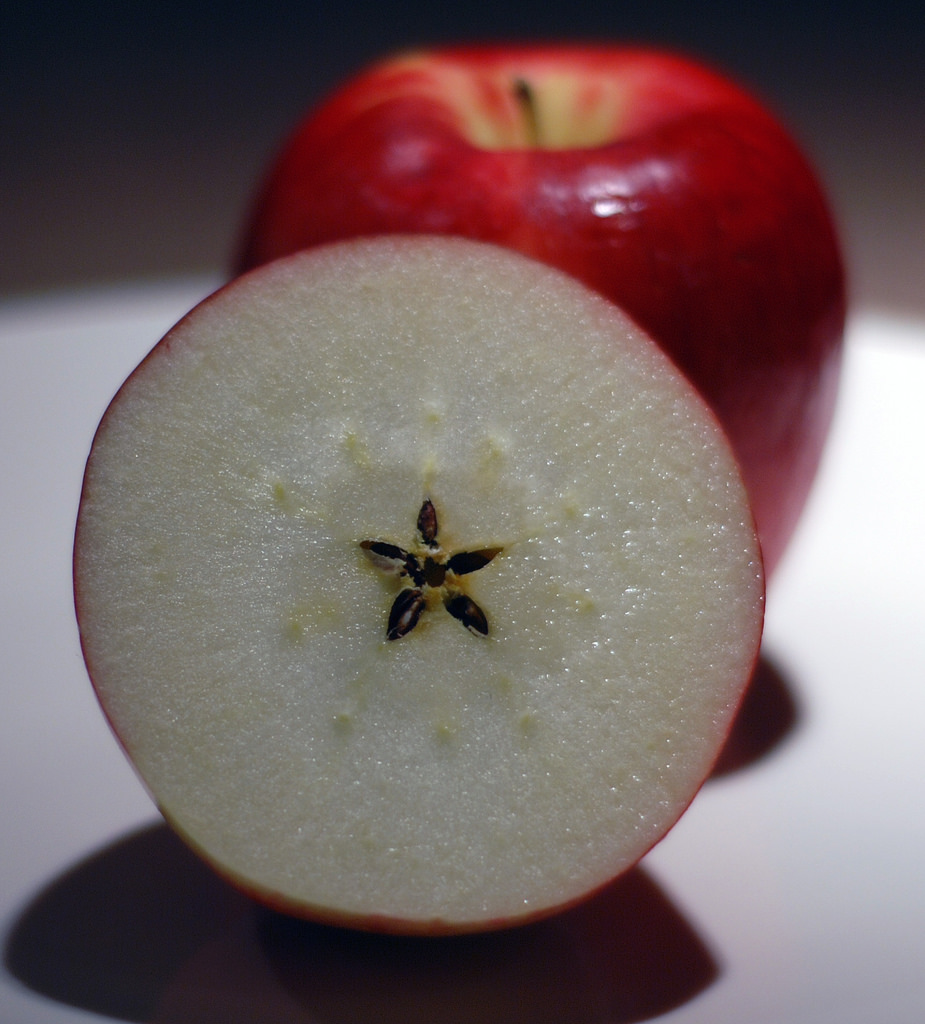
Apple trees require cross-pollination in order to produce fruit at all, and the more evenly and thoroughly pollinated they are, the better they develop. In fact, you can tell if an apple has been well-pollinated based on its shape. If you cut it width-wise, and the seeds appear in a star-like pattern in the middle of an even, well-formed apple, then you know it has been well-pollinated. Apples that have not been well-pollinated are often smaller and less symmetrical.
In large commercial orchards, honey bees are often used as pollinators, but native bees are just as, if not more, effective at pollinating fruit trees. In fact, pollination studies have shown that native bees do not have to be as abundant as honey bees in order to provide the same amount of pollination—in other words, they are individually more efficient.
Diversifying the types of pollinators that frequent an orchard not only makes the crop more likely to be pollinated properly, but also makes it less vulnerable to fluctuations in specific bee populations. For instance, many orchardists in the northeast have been citing concerns about honey bee shortages. As we state in our guide Wild Pollinators of Eastern Apple Orchards and How to Conserve Them, “For the same reason that diversified investing is safer than dependence on a single stock, relying on a single pollinator may pose increasing risk.” For the sake of the apple harvest, and the sake of the environment, it is vital to support healthy native bee populations.
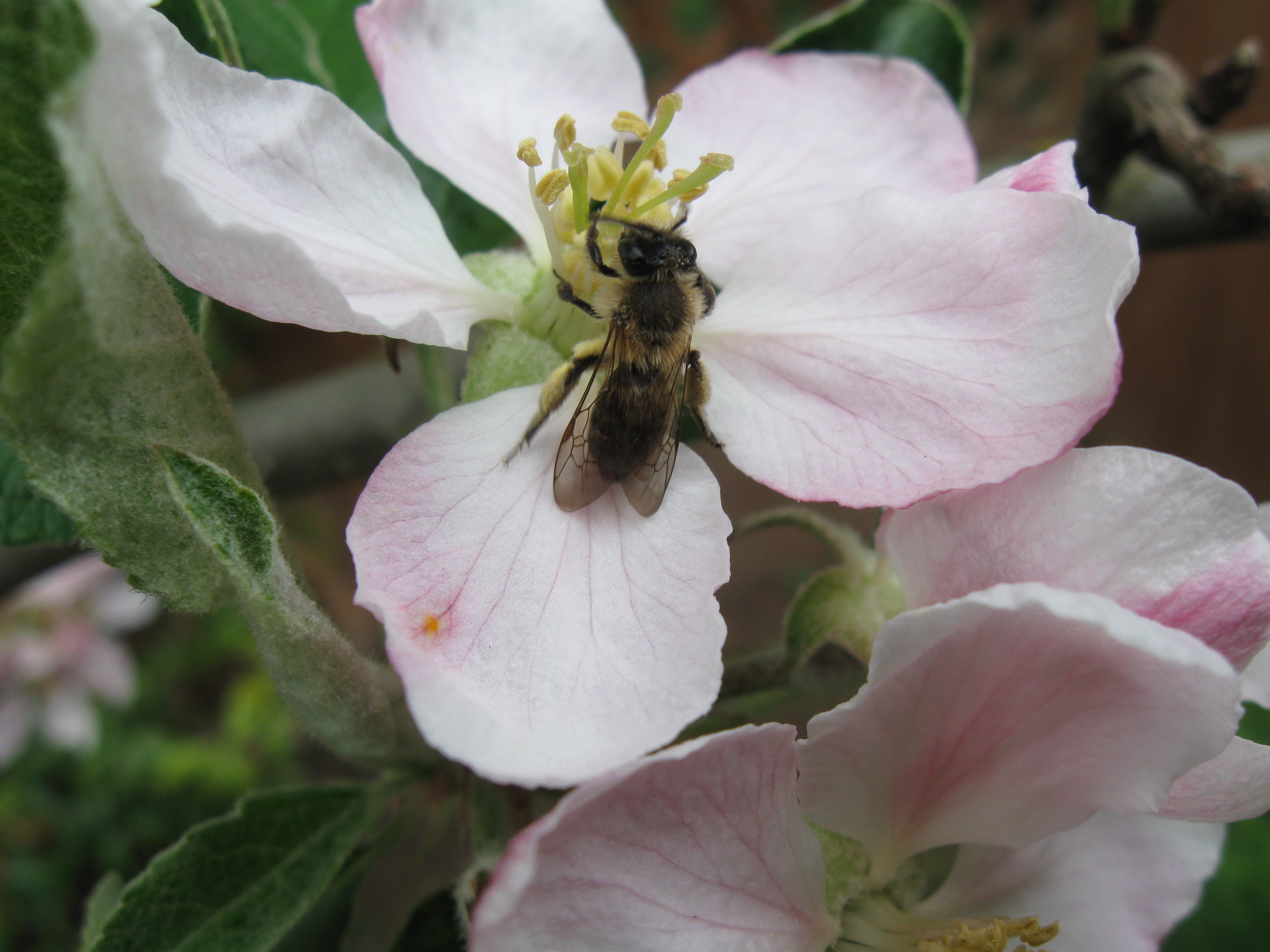
In the northeastern United States alone, there are over 100 species of native bees that visit apple orchards. The most common native bee species involved in apple pollination include:
- Blue-green sweat bees (Augochlora spp., Agapostemon spp., Augochlorella spp.)
- Bumble bees (Bombus spp.)
- Cellophane bees (Colletes inaequalis)
- Dark sweat bees (Lasioglossum spp., Halictus spp.)
- Large carpenter bees (Xylocopa virginica)
- Mining bees (Andrena spp.)
- Mason bees (Osmia spp.)
- Small carpenter bees (Ceratina spp.)
There are many ways to support native bees in orchards, other agricultural areas, and gardens, including providing habitat in the form of flowering cover crops, flowering hedgerows, and wildflower strips. It is also important, during late fall and winter, to set aside branches and leaf piles as shelter for bees and other beneficial insects. We detail a wide array of methods on our Pollinator Conservation page, where you can even select tips for the type of landscape you manage. Commercial orchardists and farmers may also be interested in pursuing Bee Better Certification, which signifies a commitment to specific standards that support native bee populations.
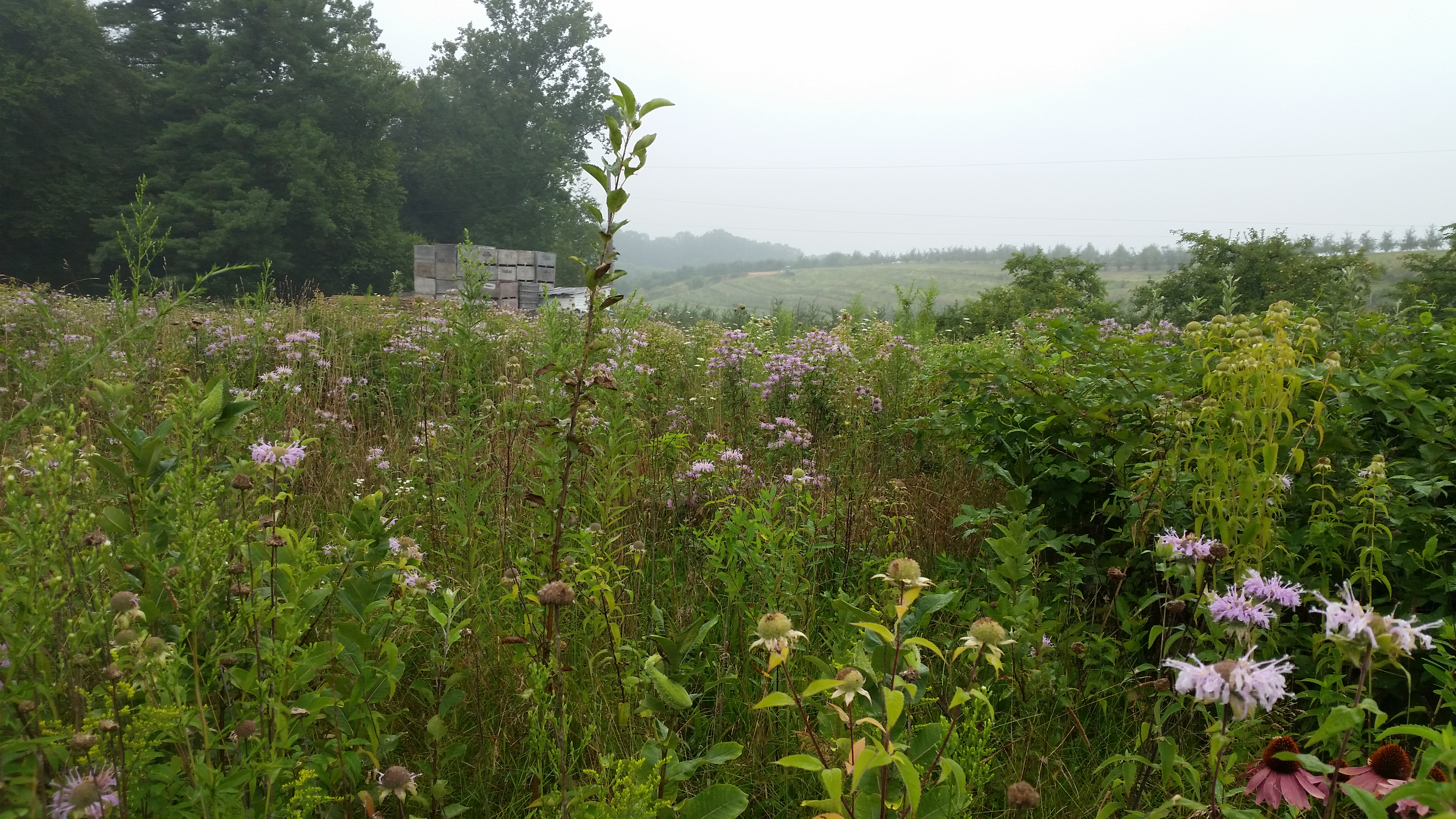
Of course, some invertebrates also pose a threat to the apple harvest, including apple maggots and leafroller caterpillars. But there are a number of ways to protect the crop without resorting to pesticides, which can negatively impact the native bees needed for pollination. For instance, in Japan, many growers use the simple yet effective method of wrapping each developing fruit with a specialized cloth bag, a practice that is becoming more common in the U.S. as well.
We also advise incorporating habitat for beneficial insects into agricultural lands. Beneficial insects can serve as predators for common crop pests, thus reducing or eliminating threats to a harvest. Creating habitat areas for beneficial insects, and scaling back or eliminating pesticide use, allows an orchard to develop a more balanced array of fauna. Over time, this species diversity will help to naturally control populations of common pests—a system known as conservation biocontrol.
In short, we owe our beautiful autumn apple harvest to invertebrates—pollinators and beneficial insects alike. No matter how you obtain your apples—whether you pick them yourself, grab them at the grocery store, or go bobbing for them—it is important to take a moment to remember the invertebrates that make this delicious harvest possible.
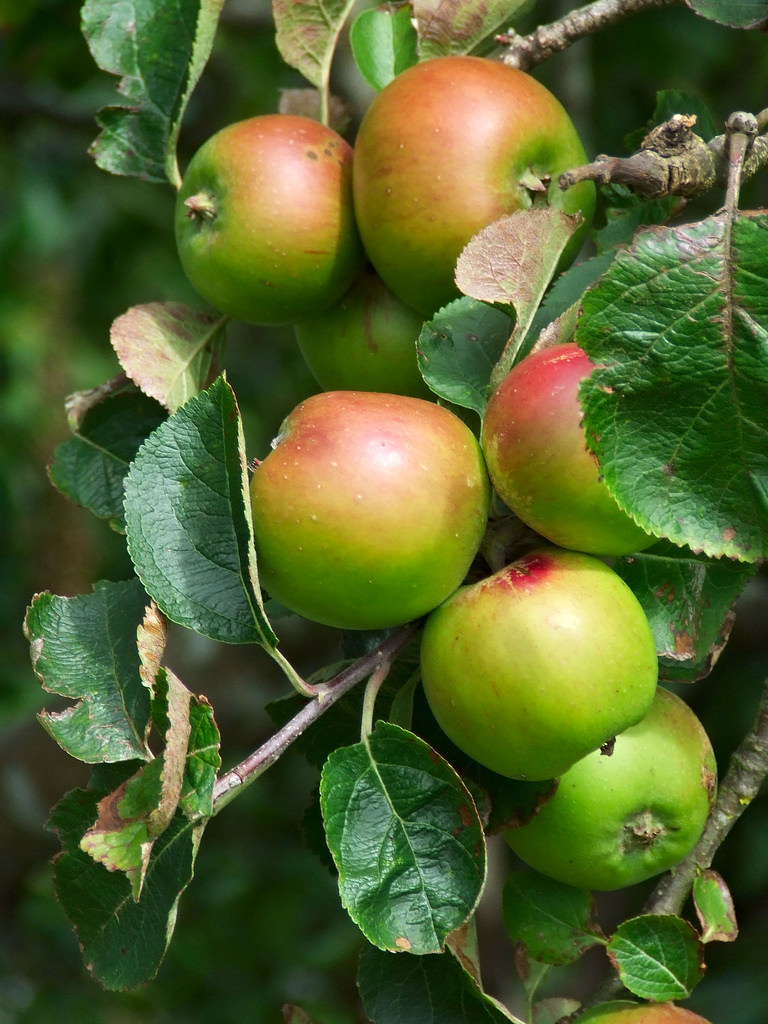
Additional Resources
Show your gratitude by signing the pollinator protection pledge!
Learn more about apple pollination and sustainable orchard management with our guide: Wild Pollinators of Eastern Apple Orchards and How to Conserve Them.
Support and utilize beneficial insect populations with our guide: Farming with Native Beneficial Insects.


